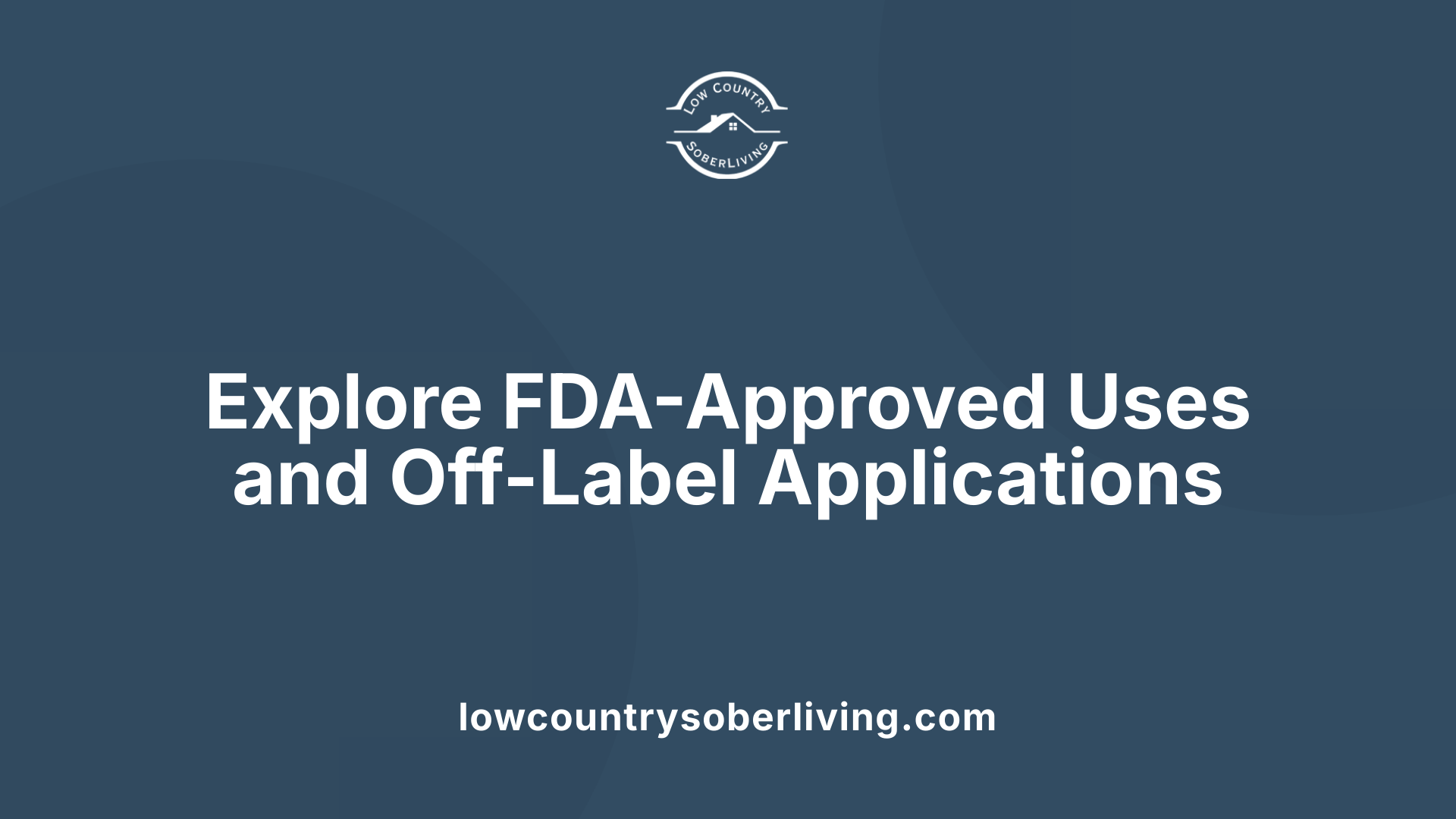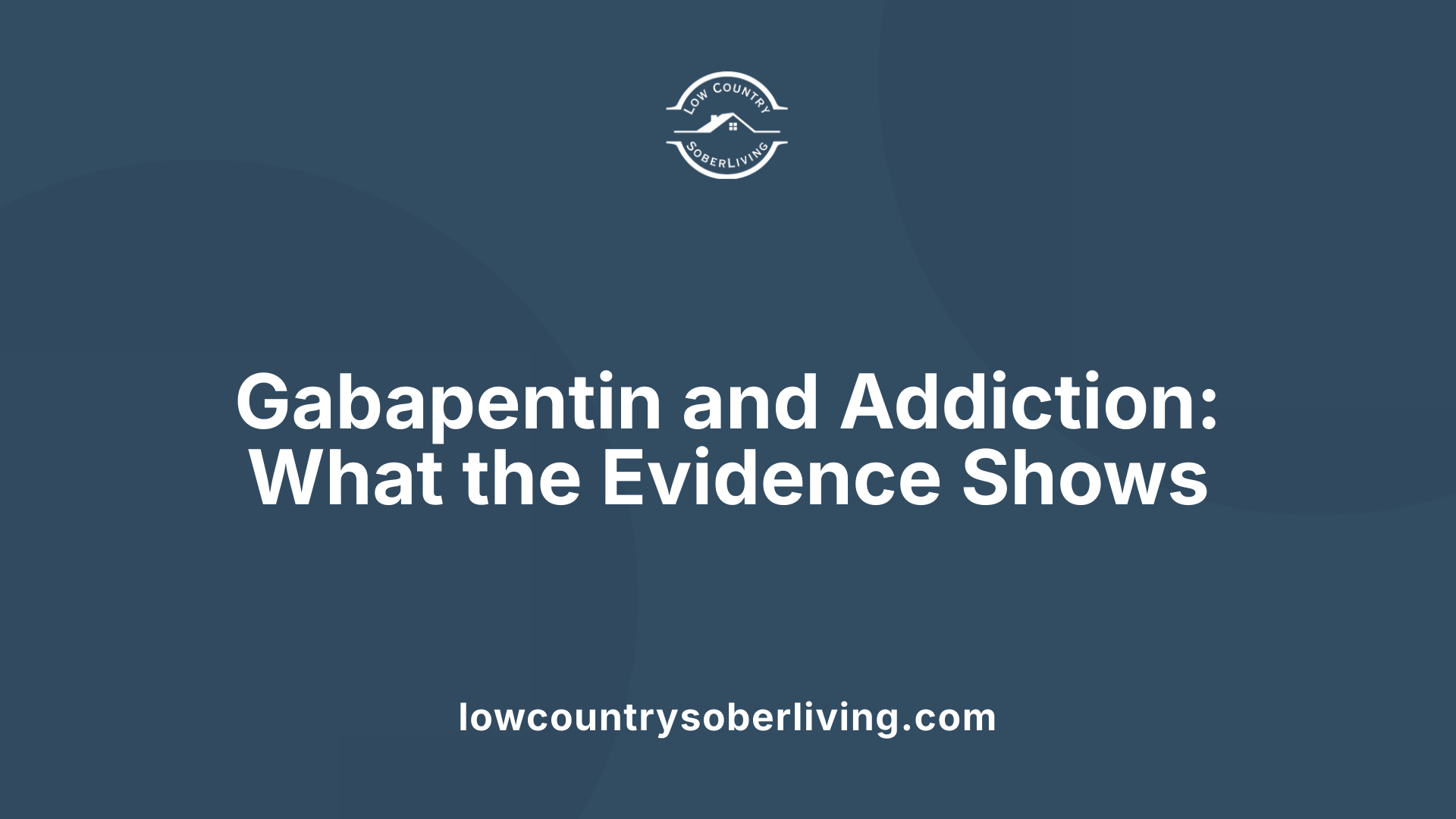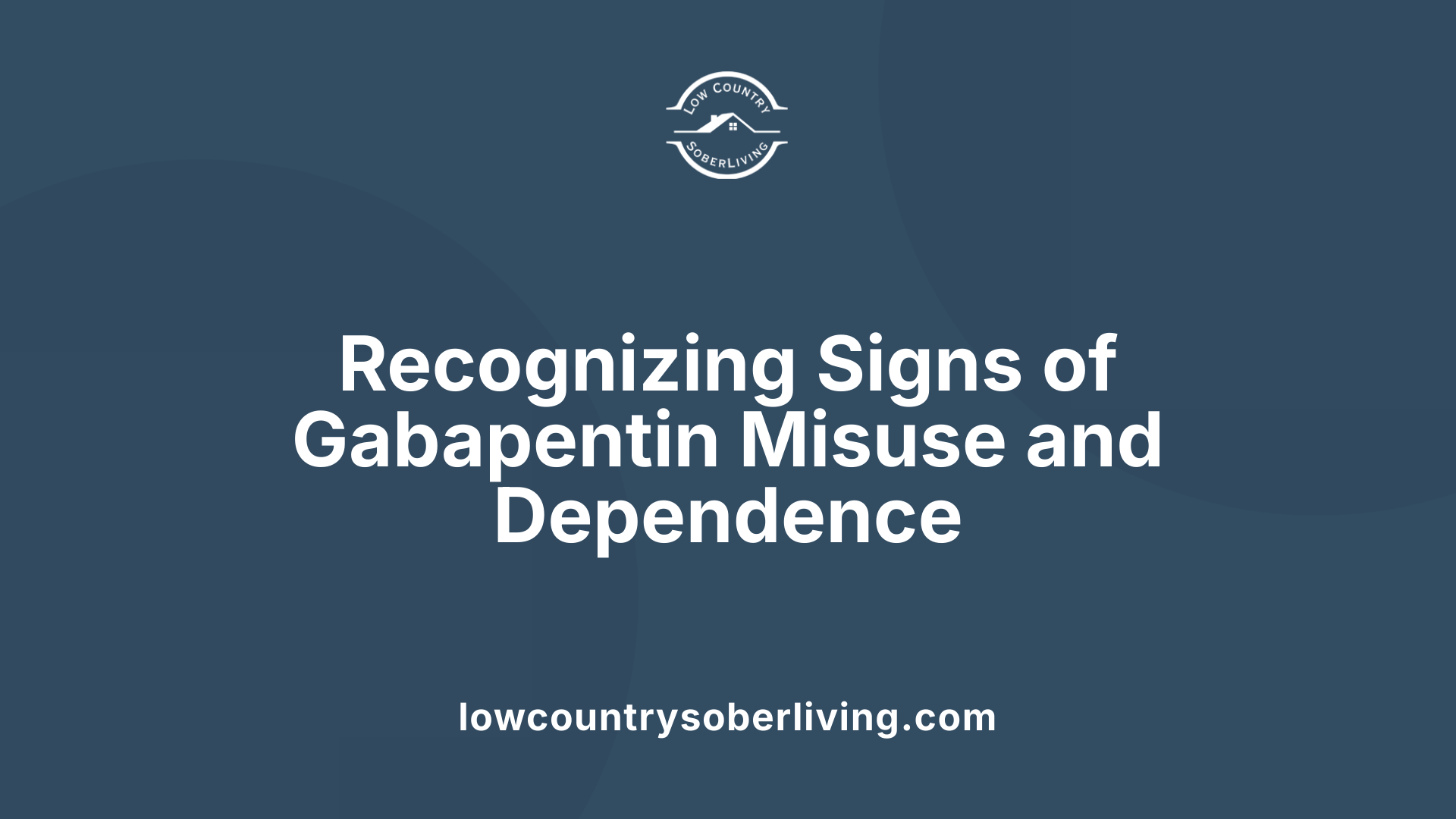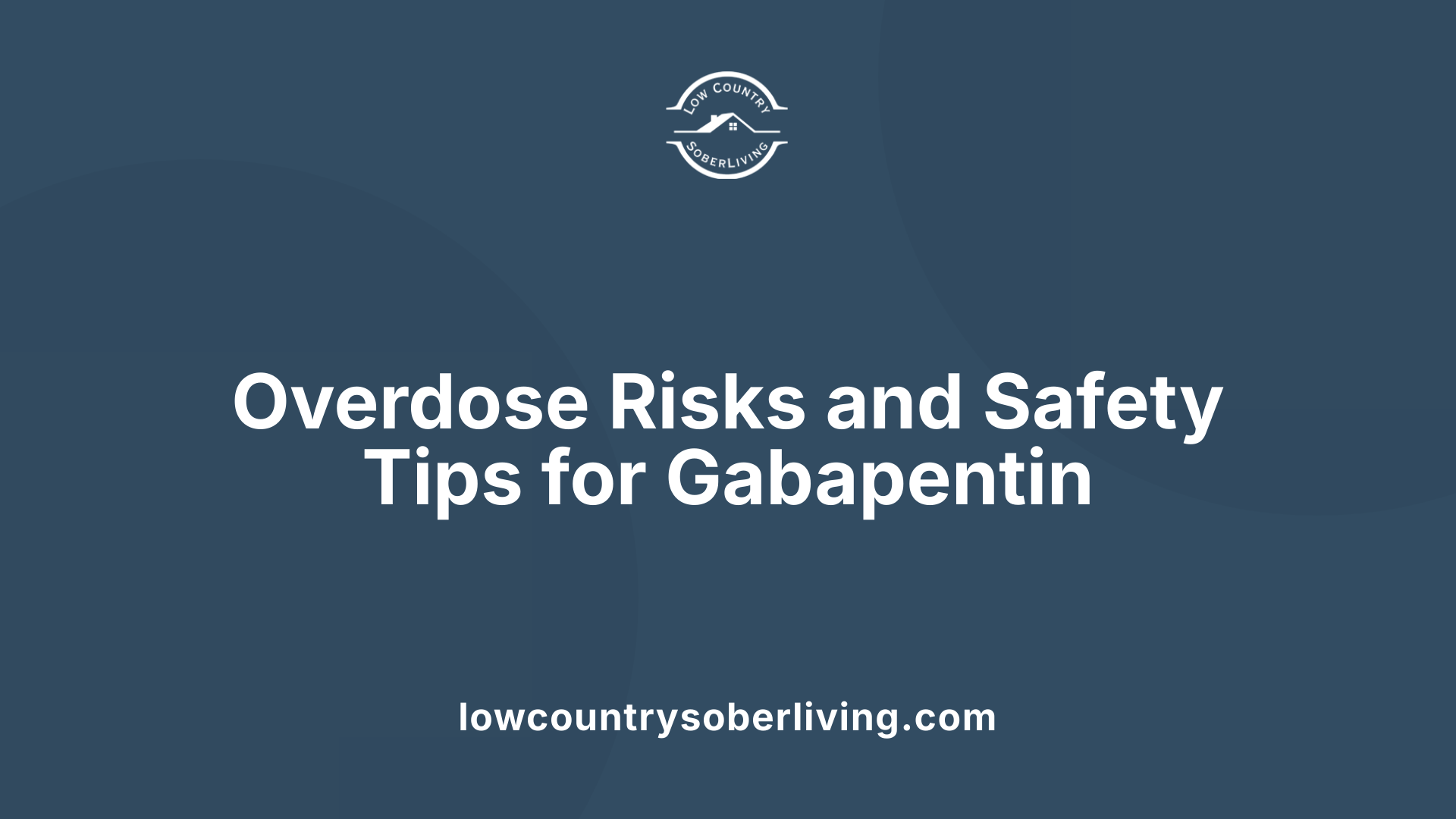An In-Depth Look at Gabapentin and Its Potential for Dependence
Gabapentin, initially developed as an anticonvulsant, has become a widely prescribed medication for nerve pain, seizures, and off-label uses. While it is generally considered safe and non-addictive when used as prescribed, emerging evidence highlights its potential for dependence, misuse, and withdrawal symptoms. This article explores the complex landscape of gabapentin's safety profile, its addictive potential, and the critical considerations for both healthcare providers and patients.
The Pharmacology and Approved Uses of Gabapentin

What is gabapentin used for?
Gabapentin is an anticonvulsant medication primarily approved for treating seizure disorders and nerve pain, such as post-herpetic neuralgia. It is also used off-label for conditions like anxiety, migraine prevention, restless legs syndrome, and hot flashes.
How does gabapentin work in the brain?
Gabapentin interacts with GABA receptors in the brain indirectly by reducing the release of excitatory neurotransmitters through binding to calcium channels, producing calming and potentially euphoric effects in therapeutic doses.
Mechanism of action of gabapentin
Gabapentin’s mechanism involves affecting calcium channels in nerve cells, which decreases the release of excitatory neurotransmitters. This action helps to calm neural activity, providing relief from nerve pain and reducing seizure activity. Although it interacts with GABA receptors, it does not act directly on GABA itself.
FDA-approved indications
Gabapentin was approved by the FDA in 2002 for managing post-herpetic neuralgia, a nerve pain condition following shingles. It is also FDA-approved for epilepsy, particularly partial seizures. Its use in other conditions like migraine prophylaxis or anxiety is off-label, but widely practiced.
Off-label uses
Medically, gabapentin is often prescribed off-label for various disorders including anxiety, neuropathic pain not caused by shingles, restless legs syndrome, and hot flashes. Doctors may recommend it for these purposes based on its calming effects and pain-relief properties.
| Use Type | Approved Indications | Common Off-label Uses | Additional Details |
|---|---|---|---|
| Seizure control | Epilepsy, partial seizures | Not applicable | Prescribed to reduce seizure frequency in epilepsy |
| Nerve pain | Post-herpetic neuralgia | Migraine prevention, anxiety | Used when nerve pain persists after shingles |
| Other conditions | Not approved but used off-label | Restless legs, hot flashes | Needs careful medical supervision to avoid misuse |
Understanding how gabapentin works and its approved uses helps ensure it’s used safely and effectively, minimizing the risk of dependence, withdrawal, or misuse.
Assessing the Evidence of Addiction and Misuse

Scientific studies on gabapentin’s addictive potential
Recent research, including a comprehensive systematic review of 106 studies, indicates that gabapentin generally shows limited addictive properties. Although some reports have documented misuse, especially at high doses or in individuals with a history of substance abuse, most evidence suggests that the medication's rewarding effects are minimal. Animal studies have demonstrated that gabapentin can produce reward behavior, such as conditioned place preference in mice, mainly when used at doses of 300 mg/kg or more. These effects involve activation of dopamine D1 receptors, marking a possible mechanism for its abuse potential.
However, in humans, the incidence of behavioral dependence remains low. The review noted that cases of addiction were rare, with no reports of individuals seeking treatment specifically for gabapentin abuse. Furthermore, the drug's pharmacological profile, which does not directly activate dopamine pathways like opioids or stimulants, supports the conclusion that its addictive potential is subdued.
Behavioral dependence evidence
While most patients do not develop addiction, some can become physically dependent if they use gabapentin long-term or at high doses. Dependence is characterized by the body adapting to the drug, leading to withdrawal symptoms such as agitation, confusion, headaches, and nausea if use is abruptly stopped.
Withdrawal symptoms, which can begin within 12 hours to a week after cessation, include anxiety, insomnia, nausea, and in severe cases, seizures. These symptoms indicate physiological dependence rather than true addiction, which involves compulsive seeking and use despite harm. Medical detoxification and gradual tapering are recommended for managing withdrawal safely.
Prevalence of misuse in vulnerable populations
Although only about 1% of the general population misuse gabapentin, rates are significantly higher among those involved with opioids or other drugs. Among opioid abusers, 15% to 20% misuse gabapentin, and up to 22% of individuals in drug treatment centers report misuse.
Signs of misuse include taking larger doses, cravings, doctor shopping, and continued use despite negative consequences. People with a history of substance use disorders are particularly at risk, especially since high doses (above 800 mg) can induce euphoria and a marijuana-like high.
In total, misuse often occurs as an attempt to amplify effects of other substances like opioids or cocaine or to alleviate withdrawal symptoms. Its increasing availability, both legitimately and on black markets, warrants ongoing vigilance and appropriate prescribing practices.
| Aspect | Findings | Details |
|---|---|---|
| Addiction classification | Most studies find minimal addictive potential | Not classified as a controlled substance federally; some states have reclassified it as Schedule V |
| Animal studies | Gabapentin can produce reward behavior at high doses | Involves dopamine D1 receptor activation |
| Human misuse | Higher in substance use disorder populations | 15%-20% misuse among opioid abusers; 22% in treatment centers |
| Withdrawal symptoms | Can occur after abrupt discontinuation | Includes agitation, nausea, headaches, seizures |
| Risk factors | Past or current substance abuse | Especially opioid and multi-drug users |
| Overdose risks | Mainly when combined with opioids or sedatives | Symptoms include double vision, slurred speech, drowsiness |
Overall, while gabapentin has a very low potential for addiction compared to opioids, misuse and dependence can occur, especially among vulnerable groups. Medical oversight, careful dosing, and patient education are crucial to minimizing risks.
Signs, Symptoms, and Indicators of Misuse and Dependence

What are the signs of gabapentin misuse?
Signs of gabapentin misuse include taking larger doses than prescribed, experiencing cravings for the drug, and visiting multiple doctors to obtain prescriptions, a practice sometimes called 'doctor shopping'. Individuals may attempt to stop using the drug on their own but find themselves unable to, indicating potential dependence. Physical signs often seen in misuse include dizziness, problems with coordination, double vision, and mood swings.
Behavioral signs are also characteristic of misuse and dependence. These can involve hiding the extent of their drug use, spending excessive amounts of time trying to obtain the medication, and exhibiting social withdrawal or mood changes. Some users may exaggerate symptoms to get more medication or continue using despite adverse effects.
What physical and psychological symptoms indicate dependence?
Dependence on gabapentin manifests through various withdrawal symptoms when the drug is discontinued abruptly. These symptoms can include agitation, anxiety, nausea, excessive sweating, dizziness, headaches, and in severe cases, seizures. Such symptoms signal that the body has become accustomed to the drug and relies on it to function normally.
Behaviorally, dependence can be seen as continued drug use despite negative consequences, engaging in drug-seeking behavior, and interference with daily responsibilities. People with dependence often show a strong desire or craving for the drug, which may lead to frequent doctor visits and attempts to hide their use.
More info
For a comprehensive understanding of gabapentin misuse signs and withdrawal symptoms, healthcare providers recommend monitoring for behaviors like doctor shopping, dosage escalation, and signs of physical dependence. Recognizing these indicators early can help in addressing potential substance use issues and prevent more serious health complications.
Search Query: Gabapentin misuse signs and withdrawal symptoms
Total Word Count: 251
Risks of Overdose and Safety Concerns

What are the dangers associated with gabapentin overdose?
Overdose on gabapentin can cause symptoms such as double vision, slurred speech, drowsiness, dizziness, diarrhea, and general sluggishness. In severe cases, particularly when combined with other substances, it may lead to serious complications like respiratory depression, which significantly increases the risk of unconsciousness or death. These dangers are heightened when gabapentin is used alongside opioids or sedatives, substances that also depress respiratory function.
Is gabapentin safe during overdose?
While taking gabapentin alone typically results in relatively mild effects during an overdose, the safety profile dramatically worsens when combined with other psychoactive drugs. The primary concern is respiratory depression, which can be fatal. This risk underscores the importance of prompt medical intervention in overdose situations. Medical support, including supportive care and possibly respiratory assistance, is vital for survival.
Precautions for safe use
To minimize overdose risks, patients should adhere strictly to prescribed doses and avoid mixing gabapentin with alcohol or other depressants. Healthcare providers often recommend gradual dose reductions when discontinuing to prevent withdrawal symptoms. State regulations, like in Kentucky, now classify gabapentin as a controlled substance to curb illicit use and misuse.
Additional safety tips
- Never increase the prescribed dose without consulting a healthcare provider.
- Avoid using gabapentin in combination with opioids or sedatives unless explicitly instructed.
- Store the medication securely away from others and out of reach of children.
- Be aware of potential overdose signs and seek emergency help immediately if they occur.
Understanding the risks involved with gabapentin overdose helps ensure its safe and effective use for medical conditions, highlighting the importance of medical supervision and cautious handling.
Legal Status and Regulation
Is gabapentin a controlled substance?
Gabapentin is not classified as a narcotic or controlled substance at the federal level in most countries. However, due to concerns about its misuse and potential for dependence, some states have taken steps to regulate its use more strictly. For example, Kentucky has classified gabapentin as a Schedule V controlled substance, making it harder to prescribe and sell illegally. This classification aims to curb abuse and monitor distribution more closely.
How do regulations vary by state?
In the United States, state regulations regarding gabapentin differ significantly. States like Michigan and Kentucky have established stricter controls, including mandatory prescription drug monitoring programs (PDMPs). These systems require healthcare providers and pharmacists to check an electronic database before prescribing or dispensing gabapentin to prevent doctor shopping and misuse.
Several other states have followed suit by implementing policies that require prescribers to verify whether a patient has received gabapentin from multiple doctors. Such measures aim to reduce the risk of dependence and illegal diversion.
| State | Regulation Type | Requirements | Additional Notes |
|---|---|---|---|
| Kentucky | Controlled Substance Schedule | Classified as Schedule V | Increased oversight, prescription limits |
| Michigan | Prescription Monitoring Program | Mandatory checkout | To prevent misuse and overprescribing |
| Ohio | Prescription Regulations | State-specific guidelines | Limits on quantity and refills |
These varied regulations reflect an increasing awareness of gabapentin’s misuse potential, especially among populations with a history of substance abuse.
Why these regulations matter?
While gabapentin is generally safe when used as prescribed, its misuse—particularly in combination with opioids or sedatives—can increase risks such as respiratory depression and overdose fatalities. The regulations aim to minimize these risks by encouraging safe prescribing practices and monitoring patient use.
For those interested, searching "Gabapentin legal status and state regulations" provides detailed, up-to-date information about individual states' policies and ongoing legislative efforts.
Managing Dependence and Withdrawal
How is gabapentin dependency managed?
Discontinuing gabapentin should be approached with caution and under medical guidance. Healthcare providers often recommend a gradual tapering schedule, reducing the dose by small amounts—commonly around 300 mg every few days—to minimize withdrawal symptoms. This slow reduction helps the body adjust gradually, decreasing the risk of rebound effects like seizures or severe anxiety. Supportive care plays a vital role, including monitoring for withdrawal symptoms and providing symptomatic relief such as anti-anxiety medications or sleep aids when appropriate. In cases of severe dependence or if withdrawal symptoms are difficult to manage at home, inpatient detox programs may be necessary. These programs offer supervised medication tapering, hydration, and medical support to ensure safety during discontinuation.
What are the withdrawal symptoms and how do they resolve?
Common withdrawal symptoms include heightened anxiety, sleep disturbances, nausea, dizziness, headaches, irritability, and in some cases, seizures. The severity and duration of these symptoms depend on factors like dosage, duration of use, and individual health status. Typically, these symptoms begin within 12 hours to a few days after stopping the medication and can last up to 10 days. With proper medical supervision, symptoms usually decrease over time, especially when tapering protocols are followed diligently. Support and therapy can also help manage psychological symptoms such as anxiety or mood swings. Patients are encouraged to stay in close contact with healthcare providers during this period for safe and effective management.
Additional considerations
It is essential to consult healthcare professionals before stopping gabapentin, especially for those who have been on high doses or have a history of seizure disorders. Tapering is critical not just to alleviate withdrawal discomfort but also to prevent potential seizure activity. By adopting a structured approach to discontinuation and ensuring ongoing support, individuals can safely navigate withdrawal and reduce the risk of relapse or adverse effects.
More about gabapentin withdrawal management
Searching for 'Gabapentin withdrawal management' can provide further insights into effective strategies, resources, and specialized treatment options.
Summary and Conclusions on Gabapentin’s Addictive Potential
Is gabapentin considered addictive?
While gabapentin is not officially classified as an addictive or controlled substance in most jurisdictions, evidence shows that misuse and dependence can occur. Misuse tends to involve taking higher doses than prescribed, using the drug without medical oversight, or combining it with other substances such as opioids or sedatives. Studies and reports indicate that some individuals, especially those with a history of substance use, may develop dependence, characterized by cravings, withdrawal symptoms, and continued use despite adverse effects. Although its rewarding effects are limited, high doses (800 mg or more) can produce euphoria and relaxation, increasing misuse potential.
What precautions should be taken with long-term use?
Healthcare providers recommend careful monitoring for individuals on long-term gabapentin therapy. Dosages should adhere to prescribed limits, and abrupt cessation must be avoided to prevent withdrawal symptoms such as agitation, nausea, dizziness, or even seizures. A gradual tapering schedule, overseen by medical professionals, helps reduce the risk of dependence and withdrawal effects. Patients with a history of substance use disorder should be particularly cautious and consult their healthcare providers for appropriate management.
What does the latest research suggest about gabapentin’s safety?
Recent years have seen extensive reviews and studies, including systematic analyses of multiple research papers, indicating that gabapentin generally possesses a low potential for addiction in the general population. Its calming and euphoric effects are minimal compared to opioids or benzodiazepines. However, research also notes that misuse and dependence are more prevalent among individuals with prior substance use disorders. High-dose use and combination with other depressants pose overdose risks, and some states have reclassified gabapentin as a controlled substance to mitigate abuse. Overall, current evidence advocates for cautious prescribing, especially in vulnerable groups, but reaffirms the safety profile for most patients when used appropriately.
Final Thoughts on Gabapentin and Its Use
Gabapentin is a valuable medication for managing nerve pain and seizures, with a generally safe profile when used appropriately. However, its potential for misuse, dependence, and withdrawal symptoms cannot be disregarded, particularly in high doses or long-term use. Healthcare providers must carefully assess patient history, monitor usage, and implement appropriate tapering strategies when discontinuing. Awareness of the signs of misuse and adherence to regulatory guidelines can help mitigate the risks associated with gabapentin, ensuring patient safety and effective treatment.
References
- Is gabapentin addictive? - Drugs.com
- Gabapentin: Uses, Side Effects, Dosages, Interactions & More
- Is Gabapentin (Neurontin) Addictive?
- How addictive are gabapentin and pregabalin? A systematic review
- What are the signs someone is addicted to gabapentin?
- Is gabapentin addictive? Misuse, dependence, and more
- Is Gabapentin Addictive - Las Vegas - Vogue Recovery Center

